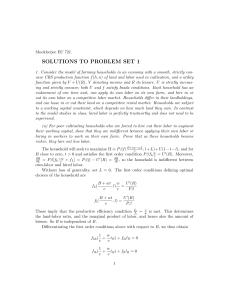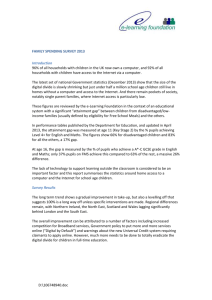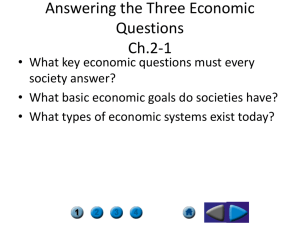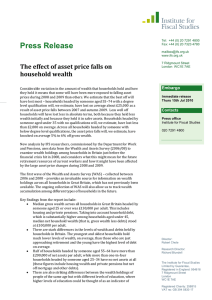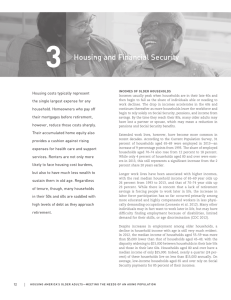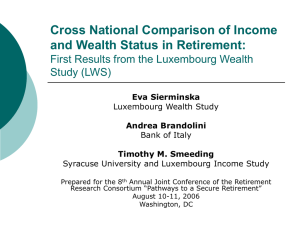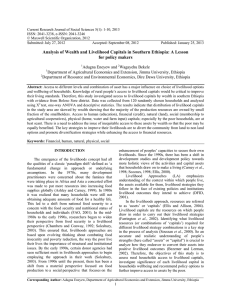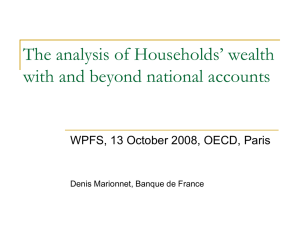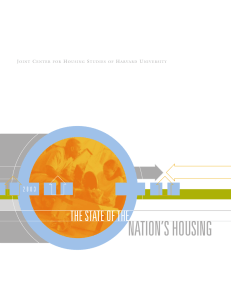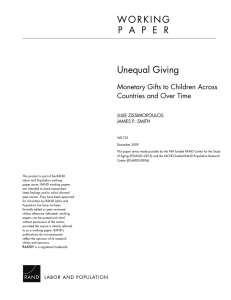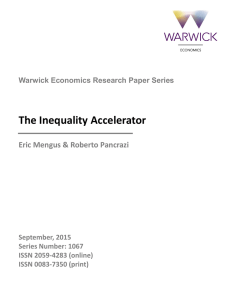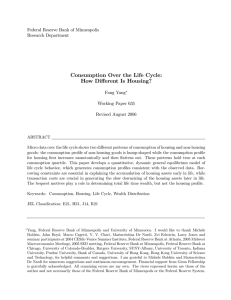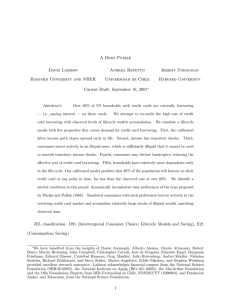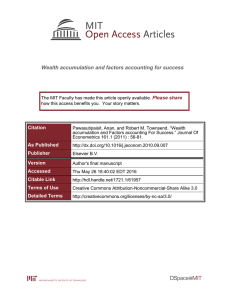Ec721 PROBLEM SET 1
advertisement
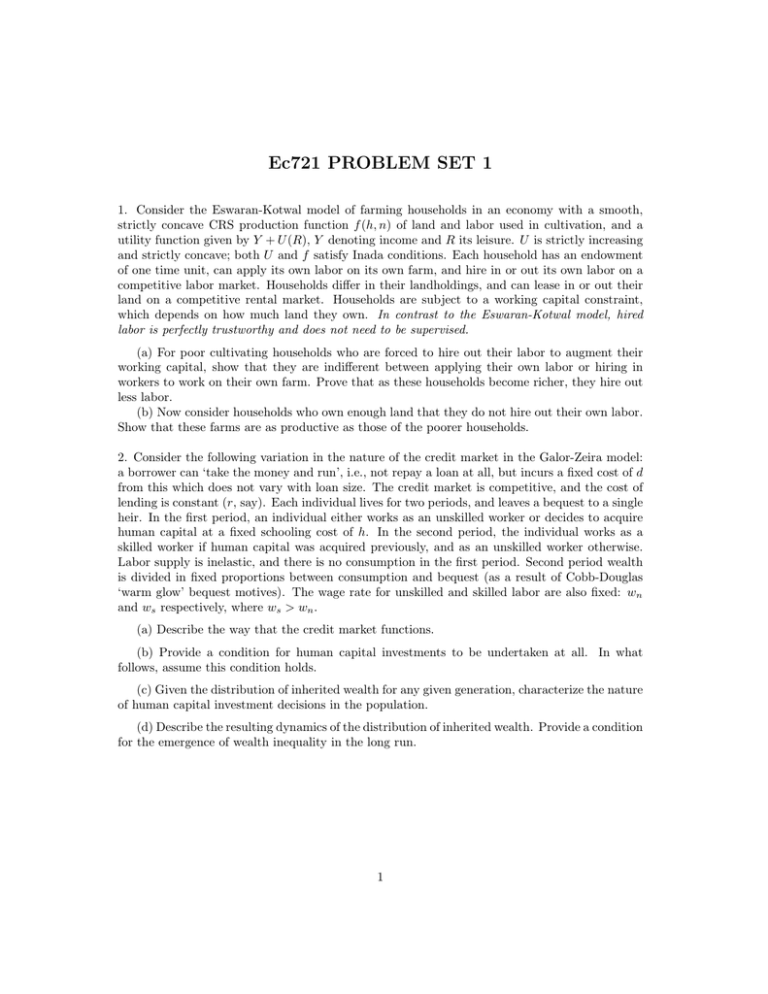
Ec721 PROBLEM SET 1 1. Consider the Eswaran-Kotwal model of farming households in an economy with a smooth, strictly concave CRS production function f (h, n) of land and labor used in cultivation, and a utility function given by Y + U (R), Y denoting income and R its leisure. U is strictly increasing and strictly concave; both U and f satisfy Inada conditions. Each household has an endowment of one time unit, can apply its own labor on its own farm, and hire in or out its own labor on a competitive labor market. Households differ in their landholdings, and can lease in or out their land on a competitive rental market. Households are subject to a working capital constraint, which depends on how much land they own. In contrast to the Eswaran-Kotwal model, hired labor is perfectly trustworthy and does not need to be supervised. (a) For poor cultivating households who are forced to hire out their labor to augment their working capital, show that they are indifferent between applying their own labor or hiring in workers to work on their own farm. Prove that as these households become richer, they hire out less labor. (b) Now consider households who own enough land that they do not hire out their own labor. Show that these farms are as productive as those of the poorer households. 2. Consider the following variation in the nature of the credit market in the Galor-Zeira model: a borrower can ‘take the money and run’, i.e., not repay a loan at all, but incurs a fixed cost of d from this which does not vary with loan size. The credit market is competitive, and the cost of lending is constant (r, say). Each individual lives for two periods, and leaves a bequest to a single heir. In the first period, an individual either works as an unskilled worker or decides to acquire human capital at a fixed schooling cost of h. In the second period, the individual works as a skilled worker if human capital was acquired previously, and as an unskilled worker otherwise. Labor supply is inelastic, and there is no consumption in the first period. Second period wealth is divided in fixed proportions between consumption and bequest (as a result of Cobb-Douglas ‘warm glow’ bequest motives). The wage rate for unskilled and skilled labor are also fixed: wn and ws respectively, where ws > wn . (a) Describe the way that the credit market functions. (b) Provide a condition for human capital investments to be undertaken at all. In what follows, assume this condition holds. (c) Given the distribution of inherited wealth for any given generation, characterize the nature of human capital investment decisions in the population. (d) Describe the resulting dynamics of the distribution of inherited wealth. Provide a condition for the emergence of wealth inequality in the long run. 1
